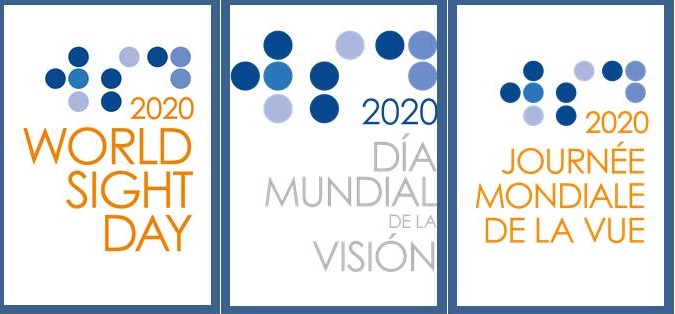President’s Insights September 2020
Every second Thursday of October the eye health sector celebrates World Sight Day (WSD) to raise awareness about the importance of vision and how to address barriers to optimal vision. Since 2000, the International Agency for the Prevention of Blindness (IAPB) coordinates this event and its 150 members, including VOSH/International, actively support the yearly call for action.
This is an excellent opportunity for your local VOSH chapter or student chapter to highlight the effects of preventable blindness and visual impairment (VI), and how to address the conditions that lead to these. As optometrists, encouraging people to take an eye examination is something we do as a key first step to prevent blindness and visual impairment. Our humanitarian clinics are part of this important preventive action. Globally, at least 2.2 billion people have VI or blindness, of whom at least in 1 billion people could have been prevented. The burden of eye conditions and VI and blindness is not borne equally. The burden tends to be greater in low- and middle-income countries and underserved populations, such as women, migrants, indigenous peoples, persons with certain kinds of disability, and in rural communities.
The World Health Organization’s World Report on Vision shows that the billions with VI or blindness takes into consideration those with near vision impairment due to presbyopia (1.8 billion) and moderate to severe distance VI or blindness due to other unaddressed refractive errors (123.7 million), cataract (65.2 million), age-related macular degeneration (10.4 million), glaucoma (6.9 million), corneal opacities (4.2 million), diabetic retinopathy (3 million), trachoma (2 million), and other causes (37.1 million).
The fact that unaddressed refractive errors constitute such a large proportion of preventable VI and blindness puts the onus on VOSH/International and its chapters to continue our work with great energy in the United States and worldwide to ensure that everyone, everywhere has access to sight. We know, and have seen over and over, that a simple pair of spectacles for presbyopia, for example, can immediately change a person’s world. That pair of reading glasses can allow someone to do meaningful work again or to read a book or important information on the internet. A simple pair of spectacles for myopia could allow a child to once again see learning material on a blackboard or far away monitor or screen. We know that myopia has developed into a worldwide pandemic. Over 2 billion people have myopia, including 312 million children under 19 years of age. This World Sight Day, let’s remember that sight can give people hope for a better life and let us support the World Sight Day Challenge that enables many organizations across the world to make this a reality.
For more information on World Sight Day, or ideas on how to help, please see these sources of information.
https://www.iapb.org/advocacy/world-sight-day/ https://www.iapb.org/advocacy/world-sight-day/world-sight-day-2020/ https://www.who.int/publications/i/item/world-report-on-vision https://www.givingsight.org/world-sight-day-challenge/
J. Daniel Twelker, OD, PhD, FAAO, FVI
President, VOSH/International

